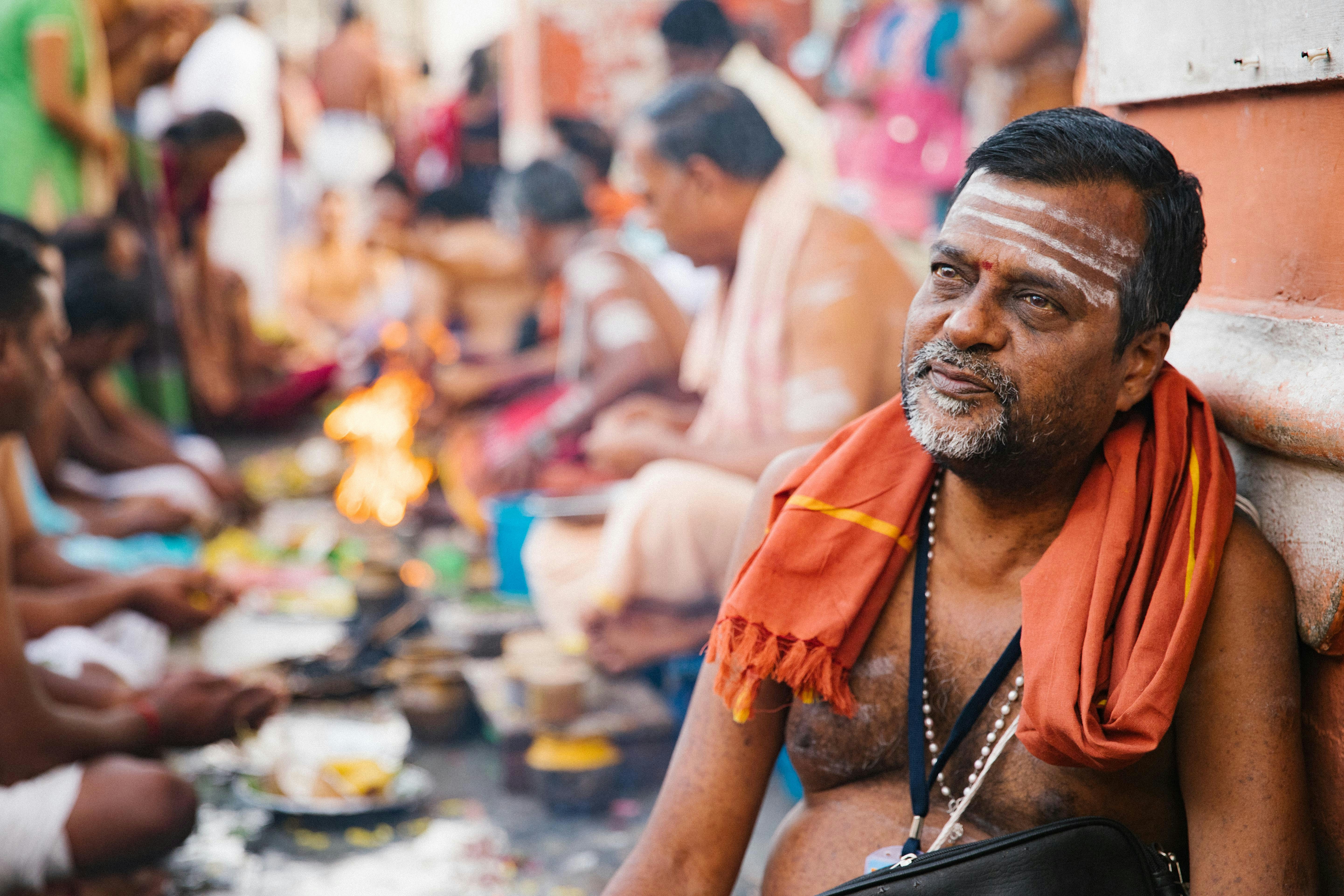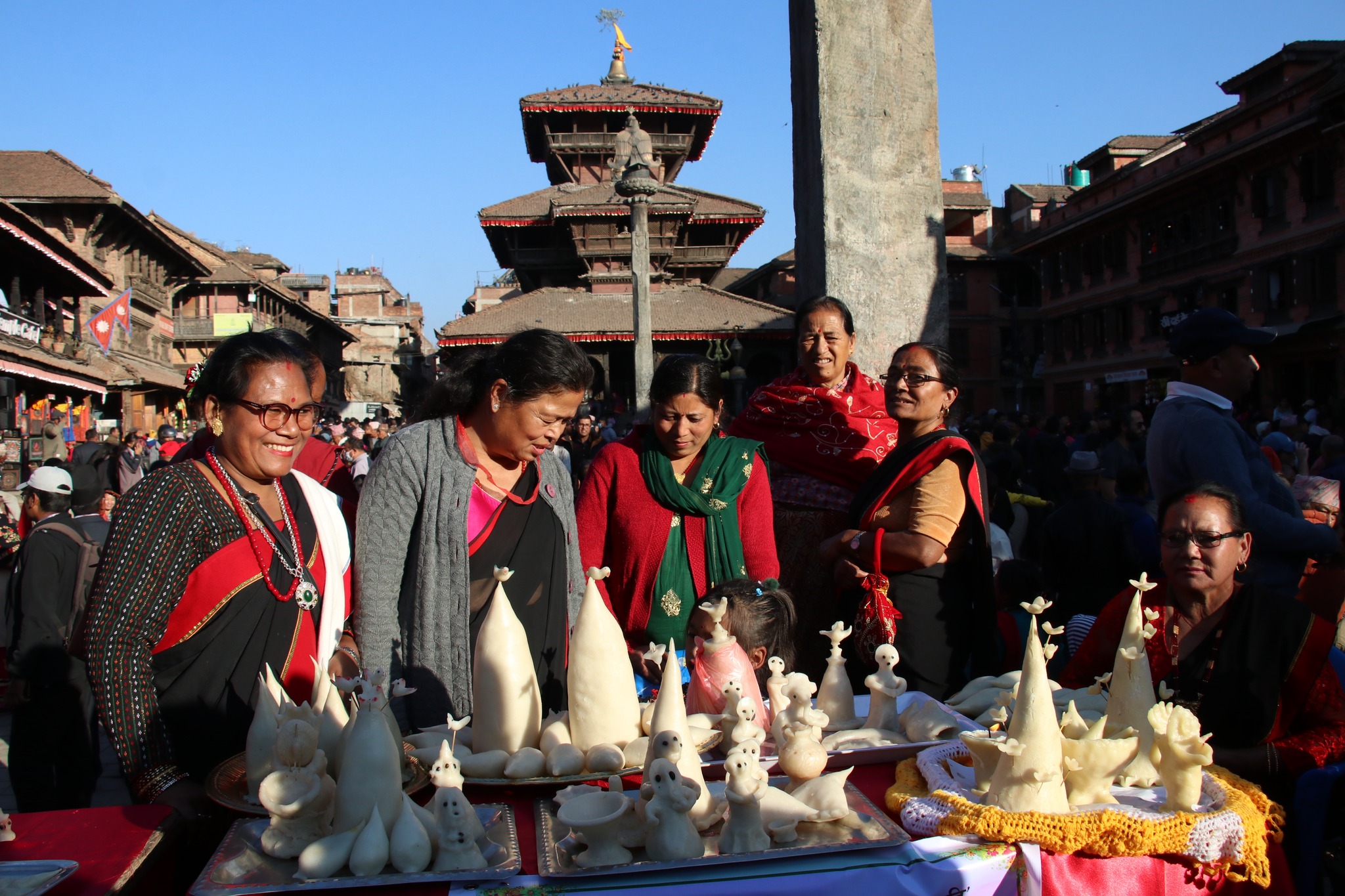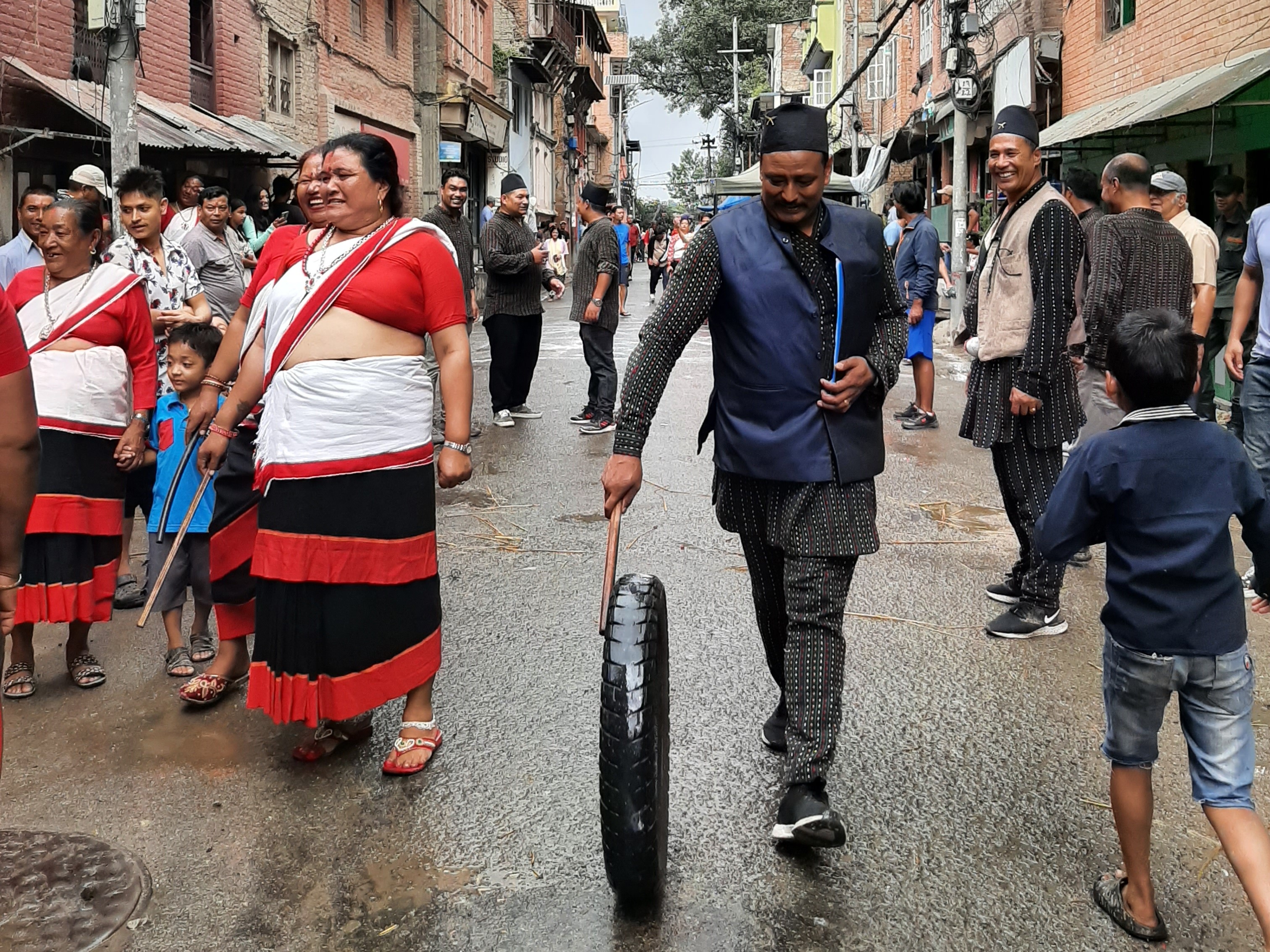During my last visit to America, I visited old friends at the Boulder County Farmers’ Market in Colorado where I wound up drinking way too much organic apple wine, and then purchased a rose-quartz healing crystal, advertised to help me find nirvana, as well as to heal hangovers – which I desperately needed just a few hours later.
Back home in Nepal, we have seen the number of the farmers’ markets go from one (the original being held at 1905 Kantipath) to three and more. Currently, the most popular markets worth-noting are the 1905 Farmers’ Market (at their new location), Le Sherpa’s Saturday Market and the Yellow House Farmers’ Market held on Sundays in Sanepa.
All three markets have similarities and distinct differences, with 1905 and Le Sherpa having a contentious and joined history, now both are held at the same time, in the same part of town, and on the same day.
Yet at all three venues, you can find the majority of the same producers. Beyond the Bee honey, baked goods from Walter’s Vienna Bakery, smoked meats from Flat Iron Grill and items from Homemade Pasta, Sauce & More are available at all three. In addition to these fine products, there is a smattering of local farmers bringing fresh produce (eggs, vegetables, fruits and more).
One common thread that runs through many of these small markets is their western collaboration, notably with places well-known for quality local food production. French cheeses & baguettes, Italian-style cured meats, and even American-style bacon are all produced in Kathmandu by startups that work with expat technicians to bring wholesome products that would otherwise be impossible to find here.
In addition to these western flavors, there are innovative produces being sold that offer an alternative to what is offered at almost every chowks and coldstores around town. Salad grown using aquaphonics, and farmed smoked trout are two great examples of items you will not find at Bhatbhateni, or at any other traditional grocery store here in the capital.
Yet with all this goodness, there is of course the usual Nepali twist to things. There are things that are copied, but not quite the way we’d want it to be.
***
Many of the products offered on market day can also be found elsewhere, on any day, at exactly the same price. So you don’t save money by going there. I find this annoying, as in the West, one goes to a farmers’ market to save on grocery bills, and not to spend more. The assumption is that there is less overhead (no middleman involved), so the savings will be passed on to the consumer.
Most products sold are priced extremely high, perhaps because they are exclusive to Nepal, or perceived to be so by the clientele. Farmers’ market items are sold as organic, even though there is very little in the way of certifying that to be true, or that there are published standards to the fact.
The exclusive club-like aspect of our farmers’ markets raises some interesting concerns. Photo: Le Sherpa/Facebook. (Opener) Farmers’ Mart at 1905, Photo: 1905/Facebook.
I suppose since the products are authentic in quality and taste (mimicking healthy products from abroad), then sellers price their goods reflective on those found in foreign markets, such as in a Marks & Spencer Express or at Harrods Food Hall.
The result is, you guessed it, the clientele of our local farmer markets is a majority mix of well-off tourists and workers from the development and diplomatic communities, and nary a typical Nepali shopper on a budget is to be seen. This exclusive club-like aspect of our farmers’ markets raises some interesting concerns, as well as the hairs on the back of many Nepali necks, even that of my own.
***
So I did manage to corner the one Nepali patron I could find at the Yellow House market one weekend, and I asked this young millennial how she felt about being the one Nepali out of a hundred at this affair. Her reply was instant, “That’s why I come,” proving what I’ve always known to be true, that farmers’ markets are great places to “people watch”.
I’ve often felt this way, as farmers’ markets here often remind me of an expat zoo, where all the wild-western animals gather to feed. I also had the chance to ask this open millennial if she had purchased anything, and just as quickly as before she replied, “Nothing.”
I’ve often felt this way, as farmers’ markets here often remind me of an expat zoo, where all the wild-western animals gather to feed.
But my major irritation with Nepali farmers’ markets (after high prices), is the smell of western consumerism in the air. This bugaboo of mine started well into the latter years of the old 1905’s operation, thus forcing me to forgo it.
Think of the smell of expensive body mist, mixed with fear and buying frenzy. The fear of not getting the last roast chicken or slice of authentic Italian lasagna comes to mind. The shoving, the pushing and overall shopping mayhem of the old 1905’s cramped quarters finally drove me away to the more relaxed atmosphere of the Yellow House market, or even to forgo weekend farmers’ markets altogether.
I often prefer to shop with local grocers during the week for exactly the same stuff unless I need a massive hit of English conversation, then I go to a market to yak.
***
The bubble that is Kathmandu’s farmers’ mart is compounded by their other aspect; they are all held at restaurants and not in an open public space.
Holding a farmers’ market on restaurant grounds may not seem like a big deal, but from a business point of view, there are ramifications.
For example, at Le Sherpa, you are not allowed to bring food from the market for consumption at La Sherpa tables, and there is limited public seating at this particular venue. Instead, you are encouraged (read enforced) to order an outrageously expensive meal if you want to have table service and chow down your market purchases in comfort.

At the new 1905 Saturday Market at Narayan Chaur, the situation is just the opposite: ample seating and no such restrictions, but there are less vendors, most likely because Le Sherpa has the same timing, and Le Sherpa is just a few minutes away.
I’d bet that some vendors just don’t have the personnel or product to split across both venues at exactly the same time. Yet at Sunday’s Yellow House market, I’ve noticed no such restrictions and the seating is wonderful. If you like louder-than-necessary live Jazz with your market socialisation that is; I don’t, but that’s just me.
In addition to this, since the venue must charge the small farmer or grower for the selling space, I suspect that cost is just tacked onto the products, making the consumer eat that charge. Or at a minimum, the stall rates may keep some really good sellers from partaking in the weekly event, creating a limited offering of healthy food to the market shopper at large.
The current state of affairs with each of these markets as they exist today make our farmers’ markets more of a high-priced bubble of expat shoppers as opposed to being a place where common folk comfortably shop and socialise while also saving a few bucks as they do it.
Jigs Gaton is a quirky kinda-American migrant, happily living in Dhobighat with family and friends, and he is always seeking out low-cost, yet healthy, food.
***
Also read
Who is an expat? Who is a migrant worker?
Retracing a Bengali detective’s footsteps in Kathmandu
I drive in Kathmandu and I have something to say to all of you

























